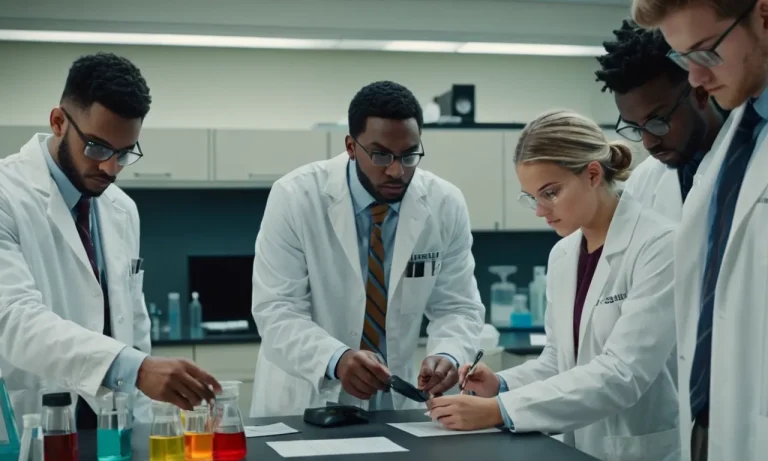The debate surrounding Michelle Obama’s school lunch reforms has been a contentious one, with opinions divided on whether her efforts to promote healthier eating habits were a success or a failure.
If you’re short on time, here’s a quick answer to your question: While Michelle Obama’s school lunch reforms aimed to improve the nutritional quality of meals served in schools, their implementation faced challenges and criticism, leading to a polarized debate on their effectiveness and impact.
In this article, we’ll delve into the details of Michelle Obama’s school lunch initiatives, examine the arguments from both sides, and explore the lasting effects of these reforms on students’ health and eating habits.
We’ll also discuss the broader implications of these efforts and the ongoing discussions surrounding childhood nutrition and wellness.
The Origins of Michelle Obama’s School Lunch Reforms
The Childhood Obesity Epidemic
In the early 2000s, the United States faced a growing health crisis: childhood obesity. According to the Centers for Disease Control and Prevention (CDC), the prevalence of obesity among children and adolescents more than tripled between the 1970s and 2010.
This alarming trend was fueled by a combination of factors, including unhealthy eating habits, sedentary lifestyles, and the increasing availability of processed and fast foods.
The Healthy, Hunger-Free Kids Act of 2010
Recognizing the urgency of addressing this issue, First Lady Michelle Obama spearheaded a national initiative to promote healthier eating habits and physical activity among children and families. In 2010, the Healthy, Hunger-Free Kids Act was signed into law, providing a framework for improving the nutritional quality of school meals.
The act authorized funding and set new standards for school lunch and breakfast programs, with the goal of ensuring that students have access to nutritious foods and beverages.
Key Changes to School Lunch Nutrition Standards
The Healthy, Hunger-Free Kids Act introduced significant changes to school lunch nutrition standards. Here are some of the key reforms:
- Increased portions of fruits, vegetables, and whole grains
- Limits on calories, sodium, and unhealthy fats
- Requirement to offer low-fat or non-fat milk options
- Elimination of trans fats and reduction of saturated fats
- Age-appropriate calorie limits based on the average calorie needs of students
According to the USDA Economic Research Service, by the 2014-2015 school year, 93% of schools were meeting the updated nutrition standards for school lunches. This marked a significant improvement in the nutritional quality of meals served to millions of American students.
While the implementation of these reforms faced some challenges and criticisms, the overall goal was to combat childhood obesity and promote lifelong healthy eating habits. By providing nutritious meals at school, the initiative aimed to shape positive dietary choices and support the well-being of children and adolescents nationwide.
😊
Criticisms and Challenges Faced by the Reforms
Complaints About Food Quality and Taste
One of the major criticisms leveled against the Healthy, Hunger-Free Kids Act of 2010 (the school lunch reform initiated by Michelle Obama) was the perceived decline in food quality and taste. Many students complained that the meals were bland, unappetizing, and lacking in flavor.
A 2014 study by the Harvard School of Public Health found that over 60% of students were dissatisfied with the taste and quality of the reformed meals. Critics argued that the strict nutritional guidelines, which limited calories, fat, and sodium, made the food less palatable, leading to increased food waste.
According to the School Nutrition Association, food waste increased by 29% after the reforms.
Increased Food Waste and Costs
In addition to complaints about taste, the reforms were criticized for contributing to increased food waste and higher costs for schools. As mentioned earlier, the stricter nutritional guidelines led to more students discarding their meals, resulting in significant food waste.
A 2015 study by the Harvard Food Law and Policy Clinic found that food waste in school cafeterias increased by as much as 56% after the reforms. This not only wasted valuable resources but also added to the financial burden on schools.
The costs of implementing the new guidelines, such as purchasing healthier ingredients and training staff, also strained school budgets. According to the School Nutrition Association, the reforms led to an average annual cost increase of $1,220 per school.
Implementation Difficulties and Resistance
The implementation of the school lunch reforms faced significant challenges and resistance from various stakeholders. Schools struggled to adapt to the new guidelines, with many citing difficulties in sourcing and preparing healthy meals that met the strict nutritional requirements.
There was also resistance from food companies and lobbyists who feared the impact on their businesses. In 2017, the Trump administration rolled back some of the reforms, citing concerns from parents and school officials about the restrictive nature of the guidelines.
Despite the challenges, many health organizations and advocates continued to support the reforms, arguing that they were necessary to combat childhood obesity and promote healthy eating habits. 😊 The debate surrounding the school lunch reforms highlighted the complex interplay between nutrition, taste preferences, and the practical realities of implementing large-scale policy changes.
Supporters’ Perspectives: The Benefits of Healthier School Lunches
Improved Nutrition and Long-Term Health Outcomes
Proponents of the healthier school lunch initiative argue that it has the potential to significantly improve the nutritional intake of children, which can have far-reaching benefits for their long-term health and well-being.
According to the Centers for Disease Control and Prevention (CDC), a balanced and nutritious diet during childhood is crucial for proper growth, development, and the prevention of chronic diseases such as obesity, type 2 diabetes, and cardiovascular issues.
By introducing more fruits, vegetables, whole grains, and lean proteins into school meals, children can develop healthier eating habits that may carry over into adulthood.
Furthermore, supporters point to studies that suggest a link between improved nutrition and academic performance. A research article published in Frontiers in Public Health found that students who consumed nutritious meals had better cognitive function, attention span, and overall academic achievement compared to those with poor dietary habits.
This underscores the importance of providing children with wholesome meals during their formative years, not only for their physical health but also for their intellectual development.
Promoting Healthy Eating Habits from an Early Age
Advocates of the healthier school lunch initiative believe that it can play a crucial role in shaping children’s eating habits from an early age. Many children spend a significant portion of their day at school, and the meals they consume there can have a lasting impact on their food preferences and choices.
By exposing students to a variety of nutritious options, such as fresh fruits, vegetables, and whole grains, schools can help cultivate an appreciation for healthy foods that may extend beyond the school environment.
Moreover, supporters argue that developing healthy eating habits during childhood can have a ripple effect on families and communities. Children who become accustomed to nutritious meals at school may influence their parents’ food choices at home, leading to positive changes in household diets.
Additionally, as these children grow into adults, they may be more likely to prioritize healthy eating and pass on these values to their own families, creating a cycle of improved nutrition across generations.
Addressing Socioeconomic Disparities in Childhood Nutrition
One of the key arguments put forth by supporters of healthier school lunches is the potential to address socioeconomic disparities in childhood nutrition. According to a study by the USDA Economic Research Service, children from low-income households are more likely to experience food insecurity and have limited access to nutritious foods. The healthier school lunch initiative aims to bridge this gap by providing all students, regardless of their socioeconomic background, with access to balanced and nutritious meals during the school day.
By ensuring that children from disadvantaged communities receive proper nourishment, supporters argue that the initiative can help level the playing field and promote equity in educational outcomes. Numerous studies, such as one conducted by the National Institutes of Health, have linked food insecurity and poor nutrition to lower academic achievement, behavioral issues, and increased health risks.
By addressing this fundamental need, the healthier school lunch program can potentially mitigate some of the challenges faced by children from low-income families and contribute to their overall well-being and success.
The Ongoing Debate and Future Directions
Revisions and Rollbacks Under the Trump Administration
The Healthy, Hunger-Free Kids Act of 2010, championed by Michelle Obama, faced significant challenges during the Trump administration. In 2018, the U.S. Department of Agriculture announced plans to roll back certain nutrition standards, citing concerns over food waste and the financial burden on schools.
The revisions allowed for higher levels of sodium, fewer whole grains, and a return to flavored low-fat milk. While supporters argued that the changes provided more flexibility, critics feared a regression in children’s health and nutrition.
According to a USDA report, the percentage of schools meeting the updated nutrition standards declined from 83% in the 2014-2015 school year to 77% in the 2018-2019 school year. However, the report also noted that student participation in the National School Lunch Program remained relatively stable during this period, hovering around 60% of eligible students.
The Impact of COVID-19 on School Lunch Programs
The COVID-19 pandemic disrupted school lunch programs across the nation, forcing districts to adapt quickly to remote learning and meal distribution challenges. In response, the USDA extended free meal waivers, allowing schools to serve meals to all students at no cost.
This measure aimed to alleviate food insecurity exacerbated by the pandemic.
Despite the challenges, many schools and communities demonstrated remarkable resilience and innovation. Some districts embraced grab-and-go meal distribution models, while others partnered with local organizations to deliver meals directly to students’ homes.
As of April 2021, the USDA reported that over 7.6 billion meals had been served through the pandemic relief programs, highlighting the crucial role of school meals in supporting children’s well-being during times of crisis.
Striking a Balance: Nutrition, Affordability, and Student Acceptance
Moving forward, the debate surrounding school lunch programs will likely continue to revolve around finding the right balance between nutrition, affordability, and student acceptance. While the CDC emphasizes the importance of nutritious meals for academic performance and overall health, critics argue that strict regulations can lead to increased costs and food waste due to students rejecting the meals.
One potential solution could be to involve students more actively in menu planning and food selection processes. By incorporating their preferences and cultural backgrounds, schools may be able to increase meal acceptance while still adhering to nutritional guidelines.
Additionally, leveraging technology and creative marketing strategies could help make healthy options more appealing to students.
Ultimately, the success of school lunch programs hinges on collaborative efforts between policymakers, educators, parents, and students themselves. By fostering open dialogue, embracing innovative approaches, and prioritizing both nutrition and student engagement, we can work towards creating sustainable and effective solutions that nourish our children’s minds and bodies alike.
Conclusion
The debate surrounding Michelle Obama’s school lunch reforms has been a complex and multifaceted one, with valid arguments on both sides. While the intentions behind the reforms were noble – promoting healthier eating habits and addressing the childhood obesity epidemic – their implementation faced significant challenges and resistance.
As we move forward, it’s crucial to strike a balance between providing nutritious meals and ensuring that students find the food appealing and affordable. Ongoing efforts to refine and improve school lunch programs, while considering the diverse needs and preferences of students, will be essential in fostering a healthier generation of children.






